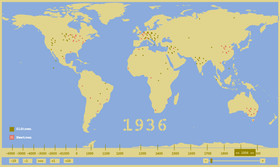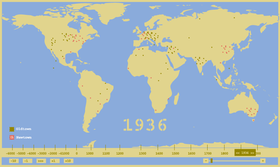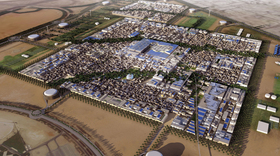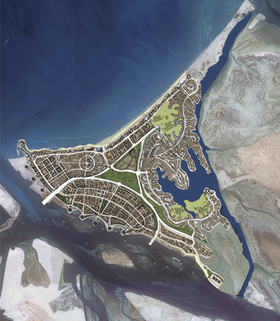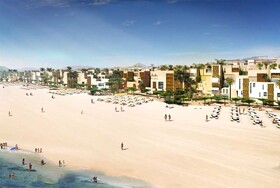New towns to be studied by the International New Town Institute are those human settlements that were founded at a certain moment in history by an explicit act of will, according to a preceding plan and aiming to survive as a self-sustaining local community and independent local government, able to play a role in the ongoing development of the region in which the new town is located.
In the second half of the 20th century, new towns are generally conceived as satellite towns of existing main cities to accommodate ongoing regional growth, while preventing an unsustainable intensification of the central city. These satellite towns may have quite different social effects on the central city. With ongoing immigration - always a main source of urban growth - the new settlers may concentrate in the main city, while the original inhabitants move to the new suburbs. The opposite may happen also: the new settlers will concentrate in the new satellite towns, while the original inhabitants stay in the central city. And segregation of new and old settlers may not happen at all, or be more related to specific age groups: young people moving into the city, families moving out and elderly people moving in again. What do we know about the causes and effects of different new town policies in this respect?
Historically, however, new towns also have been developed as a means to exploit virgin land by colonization and spontaneous or deliberate strategies to reinforce the economy of rural areas by urbanization. The Zuiderzeeproject in the Netherlands is an example in case. Could this type of new town policy still be useful in developing countries where rural economies will change in urban ones?
All during history, new towns have been developed as part of migration processes or general strategies, be they military, economical, social or all of these at the same time. Quite a few were abandoned again or experience decline just now, such as many former industrial towns all over the world. But many survive and several have grown into major cities. What were and are causes of failure and success?
New towns as planned cities are part of complex social decision processes of various public and private parties and of many individual households, companies and institutions. How are these decision processes managed and what kind of methods, models and simulation techniques are available to participants to improve their insight in and overview of the course of events?
All new towns that survive in due time will become normal. As the generation of the pioneers fades away, so does memory of those special circumstances at the start. Yet a culture of independence and enterprise may persist to become part of a local or even national identity. ‘Can do’ is the slogan of Almere. When, how and for what reasons do new towns become just normal ones? Do these more or less artificial communities have specific opportunities for being new or do they encounter special threats as soon as the special policy ends that gave them birth?
INTI Researchers Rachel Keeton and Tom Kolnaar will be heading to Abu Dhabi and Oman to speak with planners, developers and experts about the new towns under construction in the area. They will focus on Masdar City and Saadiyat Island in Abu Dhabi, then travel to The Blue City in Oman.
Masdar City is a new town designed by Foster and Partners, and claims to be the world’s first carbon neutral city. Masdar will house 50,000 people when completed, and cars are banned from this eco-oasis.
Saadiyat Island has a different focus. Following Abu Dhabi’s Plan 2030 for a sustainable future (in every sense of the word), the city will be the new regional hub for cultural programs. As part of its plan to diversify the economy away from petrodollars, the new town will boast an array of buildings by famous architects. A new Guggenheim, the first ever extension of the Louvre (hotly debated in the art world), and sprawling villas make this resort city one-of-a-kind.
In Oman, the Blue City was pitched as another world-class escape, but growing financial woes are currently threatening the new town’s future. The Blue City is still under construction, but there seems to be doubts about how long that will be true.
The researchers will conduct interviews and on-site research during their study trip. We are looking forward to their results!


